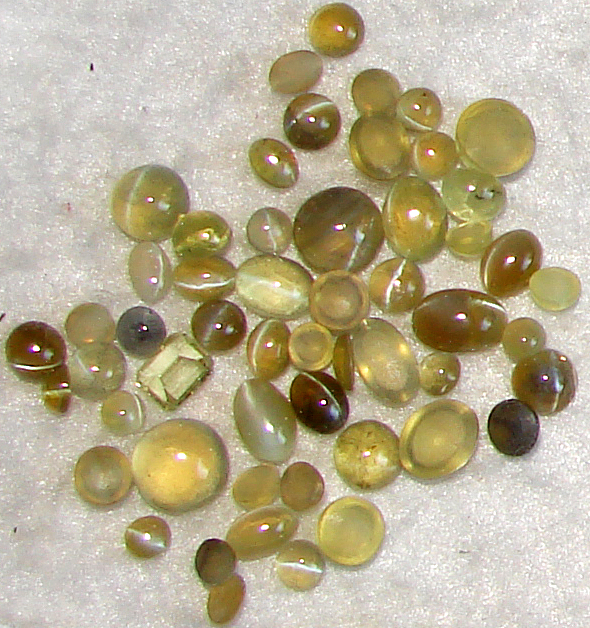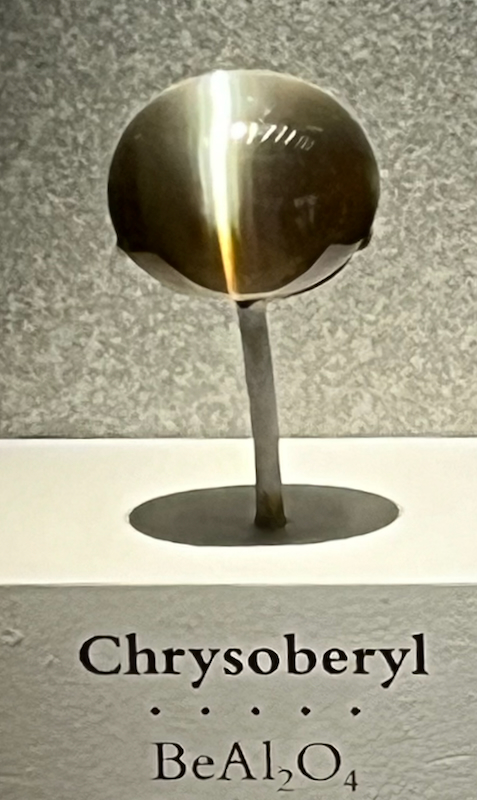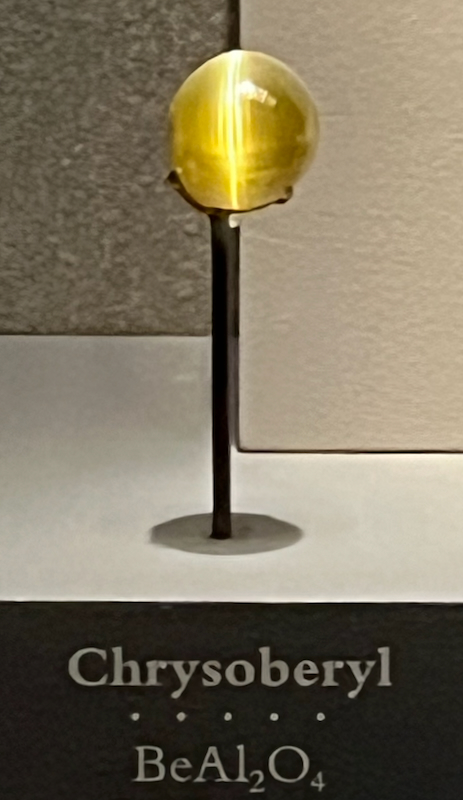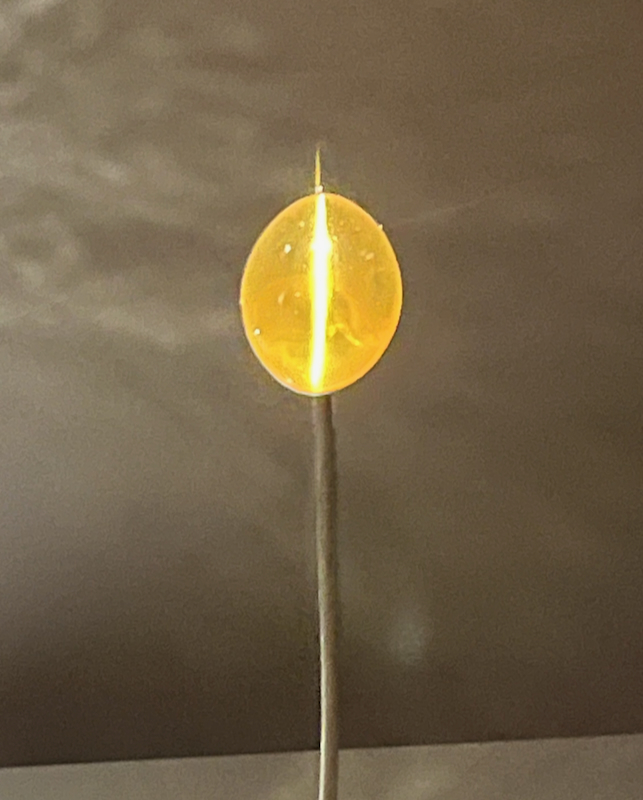Cat’s Eye
Cat’s eye gets its name from the way cats’ eyes have pupils that look like a vertical line instead of the circular pupils that people have. A polished cat’s eye gem has a similar-looking line, and as you turn the gem in different directions, the line seems to stay in the same place, looking at you. Several different minerals can form in a way that makes them look like cats’ eyes when polished, but the most valuable is chrysoberyl, partially for its rarity, and partially for its hardness of 8.5, which is third only to diamond and corundum. Whatever the mineral may be, the cat’s eye effect can be caused by fiber- or needle-shaped crystals of another mineral, or by microscopically narrow empty channels, inside the gemstone that catch the light in just the right way. If you’re describing a gem that has a cat’s eye effect, you say it’s “chatoyant,” which would translate literally from the French as “cat-eye-like.” Although a number of different minerals can be called chatoyant–moonstone, tourmaline, quartz, apatite, etc.–for professional gemologists, only chrysoberyl is officially called “cat’s eye.”
| Formula | Group or Type | Shape | Hardness | Specific Gravity | Streak | Luster |
|---|---|---|---|---|---|---|
| BeAl2O4 | Chrysoberyl | Orthorhombic | 8.5 | 3.7–3.8 | White | Vitreous or silky |




